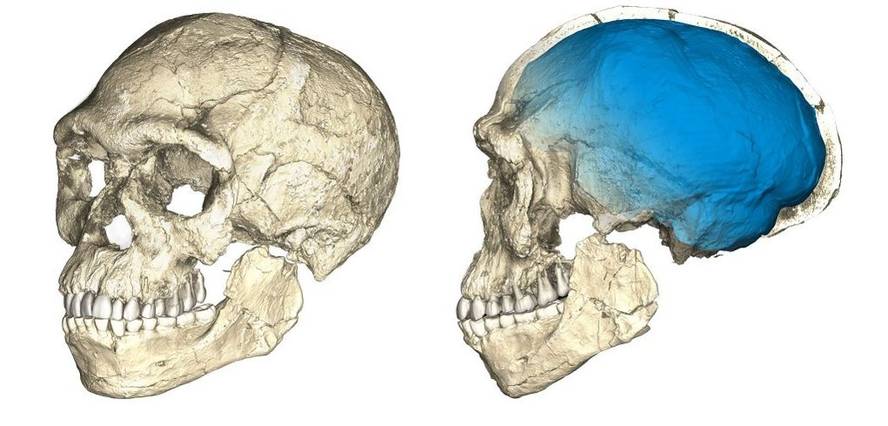Homo sapiens fossils of 300,000 years found in Morocco

Our species, with its modern morphological characteristics, has been considered for about 200,000 years. To conclude this, they were based on the fossils found in Ethiopia, which were the oldest that had a full appearance of Homo sapiens. From there it was also deduced that this land was the origin of our species.
Two studies have now been published in the journal Nature that revolutionize the previous hypothesis. Research focuses on a number of fossils found at the Jebel Irhoud site in Morocco. This site, previously known, had fossils that could be considered modern Homo sapiens. Analyzed by thermoluminescence these fossils and others that have been discovered in the place, the oldest have estimated 315,000 years. That is, they are much older than those in Ethiopia. Therefore, the origin of Homo sapiens would not be in East Africa, but in the North. According to experts, from there it would have expanded first to the entire continent and then to Europe (Out of Africa hypothesis or outside Africa).
These investigations have been led by researchers of Evolutionary Anthropology of the Max Planck Institute and have given evidence of the evolution of our species, in addition to dating. According to them, the modern features developed little by little, that is, from the oldest Homo sapiens to those considered modern, there were no leaps, but small and continuous changes.
Now, experts from around the world are analyzing and discussing the results of this research and time will tell to what extent our vision of the evolution of our species changes. At the moment, at least, it has shaken what was considered good.





